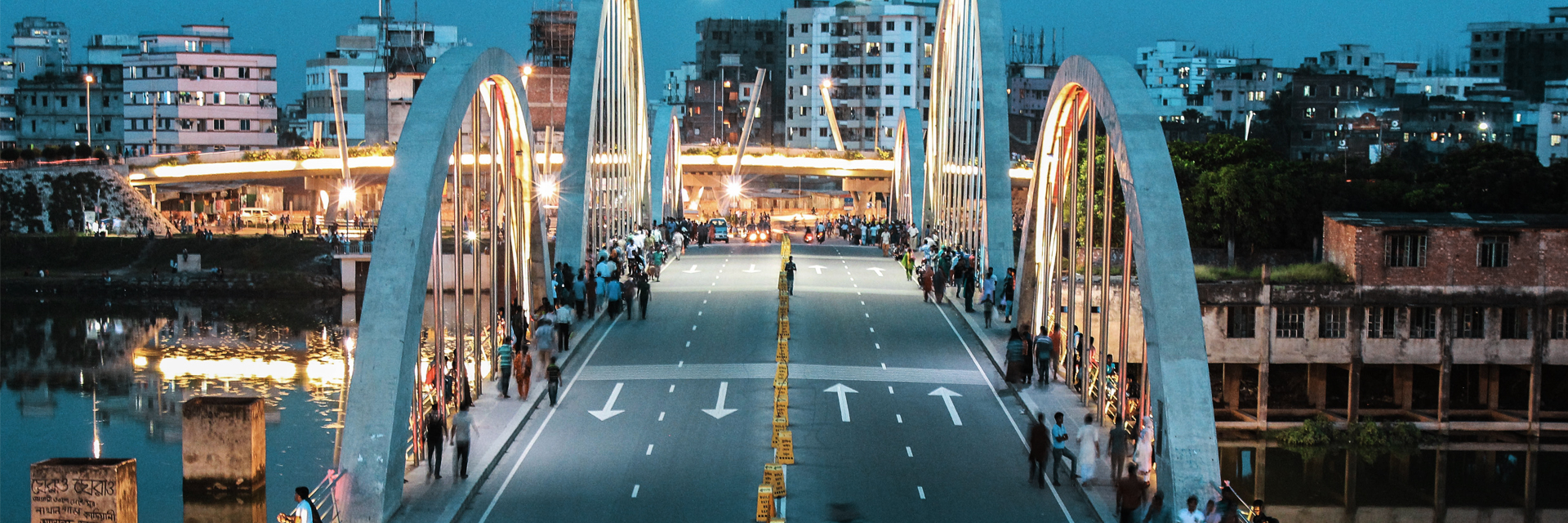Asia
To which language should you translate to localize in Bangladesh?
What we know from our community
“ Bengali and English are mostly used in official and business sectors. Bengali is the first language. People who use the internet use both languages, but prefer to use Bengali as their language of communication. Bengali language is also a matter of pride as Bangladesh witnessed the Language movement and that is why we all are very emotional about the language and it is an integral entity of the culture. People can speak various dialects of Bengali but when it comes to publishing any content or writing, standard Cholito bhasha is used. For Bangladesh, products being localized in Bengali will definitely help to bridge the gap for people who are willing to use the internet but cannot do so as most of the content and products are in English or other foreign languages. That is why Bangladesh is definitely a potential market for localization.”
LANGUAGE INSIGHT
Official language
Bengali (98%; 171.20 mln)
Actual languages
Bengali (98%; 171.20 mln), Chittagonian (7.44%; 13 mln), Rangpuri (5.91%; 10.3 mln), Sylheti (4.86%; 8.5 mln), Bangla Sign Language (1.48%; 2.6 mln), Rohingya (0.54%; 947k), other (1.3%; 2.22 mln).
What the top 150 best localized websites in the world do in Bangladesh
(Top 150 websites listed in the Global by Design ranking – published annually by Byte Level Research, this report provides a list of globally localized websites, showcasing best practices and emerging trends in their globalization)
- 27/150 localize by translating into English
- 5/150 localize by translating into Bengali
- 1/150 localizes by translating into both Bengali and Sylheti (Bengali)
- 1/150 localizes by translating into both Bengali and English
- 1/150 localizes by translating into both English Simplified Chinese
- 1/150 localizes by translating into English, Simplified Chinese, Traditional Chinese, Spanish, German, Japanese, Russian, French, Italian, Portuguese, Bahasa Indonesia, Turkish, Romanian, Thai, Ukrainian, Polish, Hungarian
-
3M
-
ABB
-
Accenture
-
Adidas
-
Adobe
-
Airbnb
-
Aldi
-
Amazon
-
American Airlines
-
American Express
-
Apple
-
Audi
-
Autodesk
-
Avis
-
Bayer
-
BMW
-
Booking.com
-
Bosch
-
British Airways
-
Bumble
-
Burberry
-
BYD
-
Canon
-
Capgemini
-
Cartier
-
Caterpillar
-
Chevrolet
-
Cisco Systems
-
Citibank
-
Coca-Cola
-
Costco
-
Dell
-
Deloitte
-
Delta
-
DHL
-
Disney+
-
Dyson
-
eBay
-
Eli Lilly
-
Emirates
-
Ernst & Young
-
Facebook
-
FedEx
-
Ford
-
Four Seasons
-
Fujifilm
-
GE
-
Gillette
-
GoDaddy
-
Google
-
Gucci
-
Haier
-
Heineken
-
Hermès
-
Hertz
-
Hilton
-
Hisense
-
Hitachi
-
Honda
-
Hotels.com
-
HP
-
HP Enterprise
-
HSBC
-
Huawei
-
Hyatt
-
Hyundai
-
IBM
-
IKEA
-
Intel
-
InterContinental Hotels
-
J&J
-
Jack Daniel's
-
Jehovah’s Witnesses
-
John Deere
-
Kellogg's
-
Kia
-
KPMG
-
L'Oréal
-
Land Rover
-
LEGO
-
Lenovo
-
Lexus
-
LG
-
Louis Vuitton
-
Lululemon
-
LUSH
-
Marriott
-
MasterCard
-
McDonald's
-
Mercedes-Benz
-
Merck
-
Microsoft
-
Mitsubishi Electric
-
Nestlé
-
Netflix
-
Nike
-
Nikon
-
Nintendo
-
Nio
-
Nissan
-
NIVEA
-
Oracle
-
Pampers
-
Panasonic
-
PayPal
-
Pepsi
-
Pfizer
-
Philips
-
Pitney Bowes
-
Porsche
-
Procter & Gamble
-
PWC
-
Revolut
-
Rolex
-
Royal Caribbean
-
Salesforce
-
Samsung
-
Sanofi
-
SAP
-
Sephora
-
Shopify
-
Siemens
-
Sony
-
Spotify
-
Starbucks
-
Steelcase
-
Stripe
-
Subaru
-
Tesla
-
The Church of Jesus Christ of Latter-day Saints
-
Tiffany
-
Tinder
-
Toshiba
-
Toyota
-
TripAdvisor
-
Uber
-
United Airlines
-
UPS
-
Visa
-
Volkswagen
-
Volvo Cars
-
Vrbo
-
Walmart
-
Western Union
-
Wikipedia
-
Wise
-
WordPress
-
Workday
-
Xerox
-
Xiaomi (Mi)
-
Zara
-
Zoom
If you need others information, below you can find a selection of economic/social/cultural data
Overview
Language
Official language
Bengali (98%),
Other languages
Chittagonian (7.44%), Rangpuri (5.91%), Sylheti (4.86%), Bangla Sign Language (1.48%), Rohingya (0.54%), other (1.3%).
T-index
0.15%
T-Index ranks countries according to their potential for online sales.
Most studied languages
Private schools tend to make use of English-based study media while government-sponsored schools use Bangla
English
Moderate proficiency (EF) – 60 of 113 countries/regions in the world- 8/23 position in Asia.
Demography
Capital: Dhaka
Currency: Bangladeshi taka
Population: 174.70 mln
Population density: 1,335.4/km2 (2021)
Economy
GDP: 437.42 billion USD (2023)
GDP per capita: 2,551.02 USD (2023)
Exports: $64.2 billion (2022)
Statistics
Internet users: 44.5% penetration, 77.36 m
Unemployment rate: 4.6% (2022)
Urbanisation: 40.47% (2023)
Literacy: 76% (2021)
Conventions
Numbering system
numbering system based on groups of two decimal numbers, instead of three as it happens in the West world. Arabic numerals and dot as decimal separator.
Date format: dd – mm – yyyy
Time: 24h time system
Country code: 00880
Language data sources: Worldatlas/Britannica//EF/Wikipedia; Demography data sources: IMF/Worldometers; Conventions data source: Wikipedia; Economy data sources: WTO/OEC/CIA/Esomar/Datareportal; Statistics data sources: Datareportal/WorldBank/UN/UNESCO/CEIC/IMF/Culturalatlas/Commisceoglobal
Facts and data
Economy
Imports
$82.7 billion (2024). Refined Petroleum($11.3B), Raw Cotton ($2.9B), Non-Retail Pure Cotton Yarn($1.97B), Scrap Iron ($1.86B), and Palm Oil ($1.77B), importing mostly from China ($26.8B), India ($13.8B), Singapore ($4.68B), Malaysia ($4.23B), and Indonesia ($3.89B). In 2022, Bangladesh was the world’s biggest importer of Heavy Pure Woven Cotton ($1.42B), Heavy Mixed Woven Cotton($1.03B), Light Pure Woven Cotton ($975M), Flax Woven Fabric($381M), and Woven Fabric of Synthetic Staple Fibers ($318M)
Financial inclusion factors (over 15 years of age)
• 37.7% have an account with a financial institution
• 24% have a credit card
• 29% have a mobile money account
• 19% make online purchases
Ease of doing business
Ease of conducting business is below average (rated 45 out of 100) ranked 7th out of 8 South Asian countries ranked 168th out of 190 countries worldwide (2022, World Bank).
Exports
$64.2 billion (2024). Knit T-shirts ($9.06B), Non-Knit Men’s Suits ($8.82B), Knit Sweaters ($8.02B), Non-Knit Women’s Suits ($6.63B), and Knit Women’s Suits ($4.08B), exporting mostly to United States ($11.7B), Germany ($10.2B), United Kingdom ($4.86B), Spain ($4.41B), and Poland ($3.53B). In 2022, Bangladesh was the world’s biggest exporter of Non-Knit Men’s Shirts ($2.59B), Knit Men’s Shirts ($1.44B), Jute Yarn($528M), Jute and Other Textile Fibers ($205M), and Textile Scraps ($171M)
Main local online stores
Rokomari.com, Daraz.com.bd, Ajkerdeal.com, Pickaboo.com, Bagdoom.com, Othoba.com, PriyoShop.com, BanglaShoppers.com, Clickbd, Chaldal.com
Economic freedom
‘Mostly not free’ (rated 54.4 out of 100) ranked 25th out of 39 countries in Asia Pacific ranked 116th out of 184 countries worldwide (2024, Heritage Foundation and Wall Street Journal).
Economy data sources: WTO/OEC/CIA/Esomar/Datareportal
Service Imports (2020)
Service Exports
Source: OEC
Trade balance of goods from 2012 to 2022
Source: Statista
Historical Data Trade Imports
The following section uses historical trade data imports from partners of Bangladesh.
Historical Data Trade Exports
The following section uses historical trade data exports from partners of Bangladesh.
Source: OEC
The Top Export Opportunities for Bangladesh by Relatedness
Relatedness measures the distance between a country's current exports and each product by showing only products that Bangladesh is not specialized in.
Bangladesh's Most Complex Exports
The Product Complexity Index (PCI) measures the knowledge intensity of a product by considering the knowledge intensity of its exporters.
Source: OEC
Bangladesh's Most Specialized Products
Specialization is measured using Revealed Comparative Advantage (RCA), an index that takes the ratio between Bangladesh observed and expected exports in each product.
Source: OEC
Perception of products made in selected countries in 2017
Source: Statista
Which attributes do you associate with products made in Bangladesh?
Source: Statista
Market Growth Imports (2020)
This score represents the likelihood that the given country will start importing that product in the next few years. It forecasts the opening of a new specific market.
Market Growth Exports (2020)
This score represents the likelihood that the given country will start exporting that product in the next few years. It forecasts the opening of a new specific market.
Source: OEC
Foreign direct investment, net inflows (% of GDP)

T-index
Reach most of the online purchasing power
T-Index ranks countries according to their potential for online sales. It estimates the market share of each country in relation to global e-commerce.
Try it nowMedia
Media language Bangla, English
Information channels
TV is the most popular medium. State-owned BTV is the sole network with national terrestrial coverage. Satellite and cable channels and Indian TV stations have large audiences.
State radio covers almost the entire country. BBC World Service in English and Bengali is heard on 100 FM in Dhaka.
Newspapers are outspoken and privately-owned. English-language titles appeal mainly to an urban readership. Media tend to be polarised, aligning themselves with one or other of the main political factions.
Freedom House says journalists and media face lawsuits, harassment and physical attacks. A digital security law allows for prison terms for “negative propaganda”.
Access to the internet is usually unrestricted, says US-based Freedom House. But access to social media, messaging platforms and news sites has occasionally been blocked by the authorities. Some prominent bloggers who have written about Islamic fundamentalism have been murdered for their writing. Bloggers and social media users have been arrested on blasphemy-related charges.
News agency
Bangladesh Sangbad Sangstha (BSS) – official, English-language pages
bdnews24 – private
Banglanews24.com – private
Television
Bangladesh Television (BTV) – government-run
ATN Bangla – private, via satellite and cable
Channel i – private, via satellite and cable
NTV – private, via satellite and cable
RTV – private, via satellite
Ekushey TV – private, via satellite
Radio
Betar-Radio Bangladesh – government-run, operates networks A, B and C from Dhaka and local services
Radio Today FM – privately-owned
Radio Foorti FM – privately-owned
ABC Radio – privately-owned
The press
The Daily Star – English-language
New Age – English-language daily
The New Nation – English-language daily
The Independent – English-language daily
Daily Sun – English-language
Holiday – English-language weekly
Prothom Alo – Bengali daily, online pages in English
Dainik Ittefaq – Bengali daily, online pages in English
Dainik Jugantor – Bengali daily
Media data source: BBC
Internet Data
Internet users
44.5% penetration, 77.36 million
Share of web traffic by device
74.17% mobile phones, 25.21% computers (laptops and desktops), 0.62% tablet devices.
Median speed of mobile Internet connection
23 Mbps
Median speed of fixed Internet connection
39.83 Mbps
Mobile connection as a percentage of total population: 108.5%
Percentage of mobile connections that are broadband (3G-5G): 66.8%
Most popular web search engines
Google (97.61%), Bing (1.68%), DuckDuckGo (0.3%), Yahoo! (0.25%), YANDEX (0.07%), other (0.1%).
Most used social media
Facebook (82.25%), YouTube (12.65%), Twitter (2.12%), Instagram (1.42%), Pinterest (0.78%), reddit (0.36%).
Internet data sources: Datareportal/Statcounter
Social statistics
Life expectancy
74 years (2022)
Corruption perceptions Index
Bangladesh scored 25 out of 100, ranked 147 out of 180 countries worldwide.
Current health expenditure
2.36% of GDP
CO2 emissions
0.5 metric tons per capita
Current education expenditure
71% of total expenditure in public institutions
Religion
In Bangladesh, religion is quite openly practiced but not fanatical. It is advisable not to talk about religion.
Gender
The consequences and also causes of women’s low status are high levels of poverty, illiteracy, poor health, lack of marketable skills, unemployment, and a general lack of access to social and economic opportunities to participate in the development process of society.
World Happiness Index
Bangladesh ranked 94 out of 137 countries, with a score of 5.155.
Social statistics sources: WorldBank/UN/UNESCO/CEIC/IMF
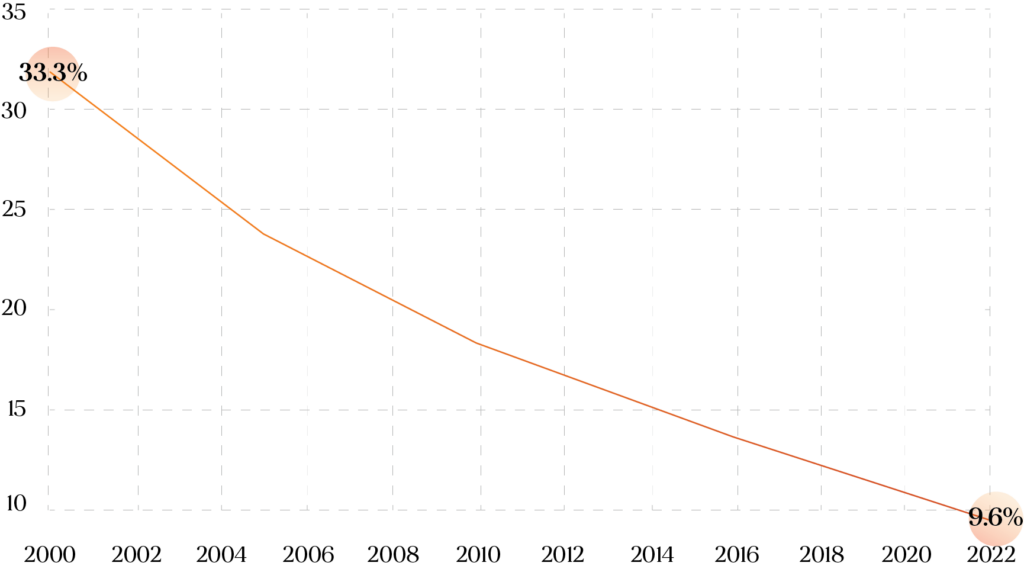
Social statistics sources: WorldBank
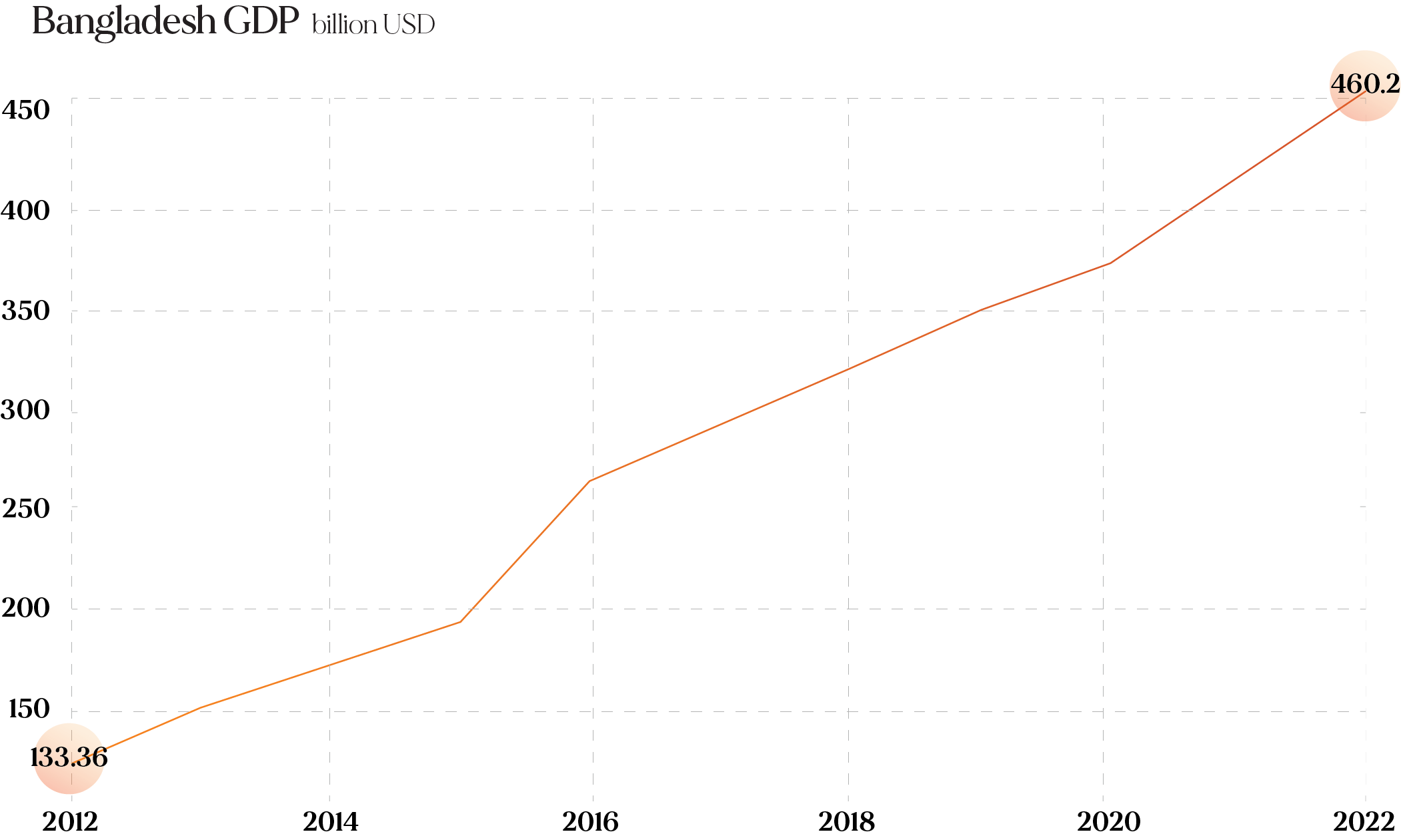
Source: Worldbank 2022
Bangladesh urban-rural 2018
Sources: Britannica
The Data Factbook is a work in progress project. Our community is helping us to fill it up always with new and updated data. Your contribution is precious. If you want to help us, please write your advices at imminent@translated.com
Languages research
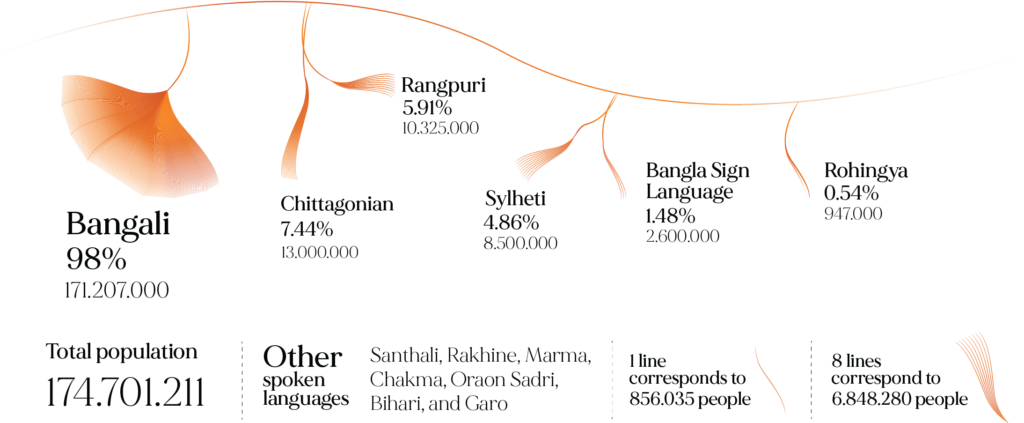
The “other” languages of Bangladesh
Bengali or Bangla is spoken by 98% of the population, but what is the weight of the other languages in Bangladesh?
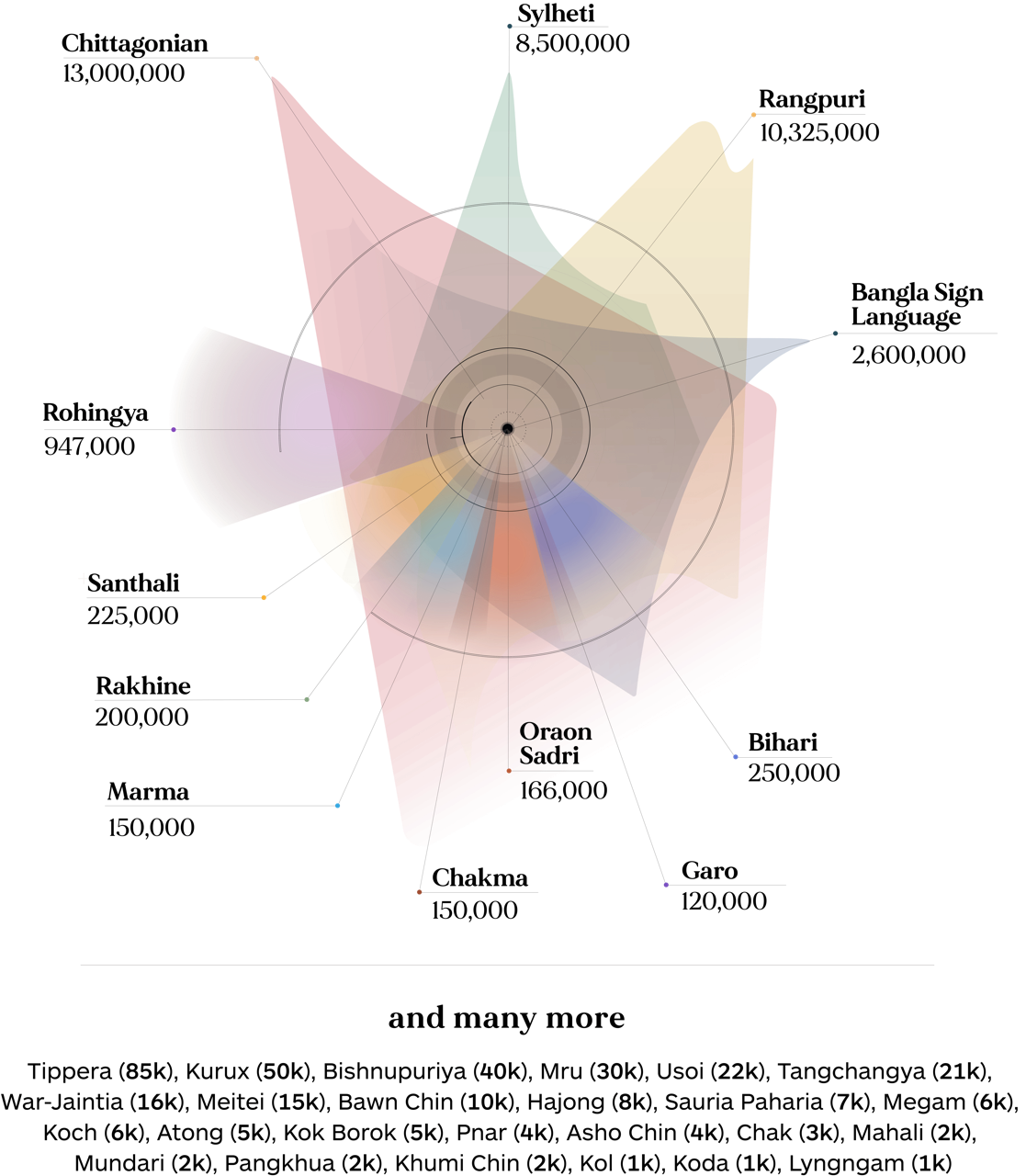
Bengali
Bangla, or Bengali is a member of the Indic group of the Indo-Iranian or Aryan branch of the Indo-European family of languages.
Bengali is the most widely spoken language of Bangladesh and the second most widely spoken of the 22 scheduled languages of India. In 1999, UNESCO recognised 21 February as International Mother Language Day in recognition of the language movement when the people of Bangladesh (then East Pakistan) fought for recognition for the Bangla language.
Bengali is the official and national language of Bangladesh, and the official language of the states of West Bengal, Tripura and the Barak Valley region of the state of Assam. It is the most widely spoken language in the Andaman and Nicobar Islands as well in the Bay of Bengal and is spoken by significant populations in other states including Arunachal Pradesh, Delhi, Chhattisgarh, Jharkhand, Meghalaya, Mizoram, Nagaland and Uttarakhand. Bengali is also spoken by the significant global Bengali diaspora (Bangladeshi and Indian Bengalis) communities in Pakistan, the United Kingdom, the United States, and the Middle East.
The history of Bengali language and Literature is usually divided into three major successive stages of development:
(i) Old Bengali Language & Literature
(ii) Middle Bengali Language & Literature
(iii) Modern Bengali Language & Literature
The modern Bengali vocabulary contains the vocabulary base from Magadhi Prakrit and Pali, also tatsamas and reborrowings from Sanskrit and other major borrowings from Persian, Arabic, Austroasiatic languages and other languages.The immediate predecessor was the spoken Apabhramsa-Avahatta, prevalent in the eastern region.
The two main forms of written Bengali:
a) Sadhubhasha; Sanskritised form of Bengali.Shadhu bhasha was a historical literary register of the Bengali language most prominently used in the 19th to 20th centuries during the Bengali Renaissance.
b) Chôlitôbhasha; colloquial form of Bengali using simplified inflections.Cholito-bhasha ,is considered by linguists as Standard Colloquial Bengali, is a written Bengali style using colloquial idiom and shortened verb forms, and is the standard for current written Bengali and is based on the dialect spoken in the Shantipur region in Nadia district, West Bengal, India.
The are many dialects in Bengali language, but the four main dialects roughly approximate the ancient political divisions of the Bengali-speaking world, known as Radha (West Bengal proper); Pundra, or Varendra (the northern parts of West Bengal and Bangladesh); Kamrupa (northeastern Bangladesh); and Bangla (the dialects of the Khulna, Barisal, Dhaka, Mymensingh, Sylhet and Comilla Divisions of Bangladesh)
The south-western dialects (Rarhi or Nadia dialect) form the basis of modern standard colloquial Bengali.
Photo credit: Salman Preeom, Unsplash
